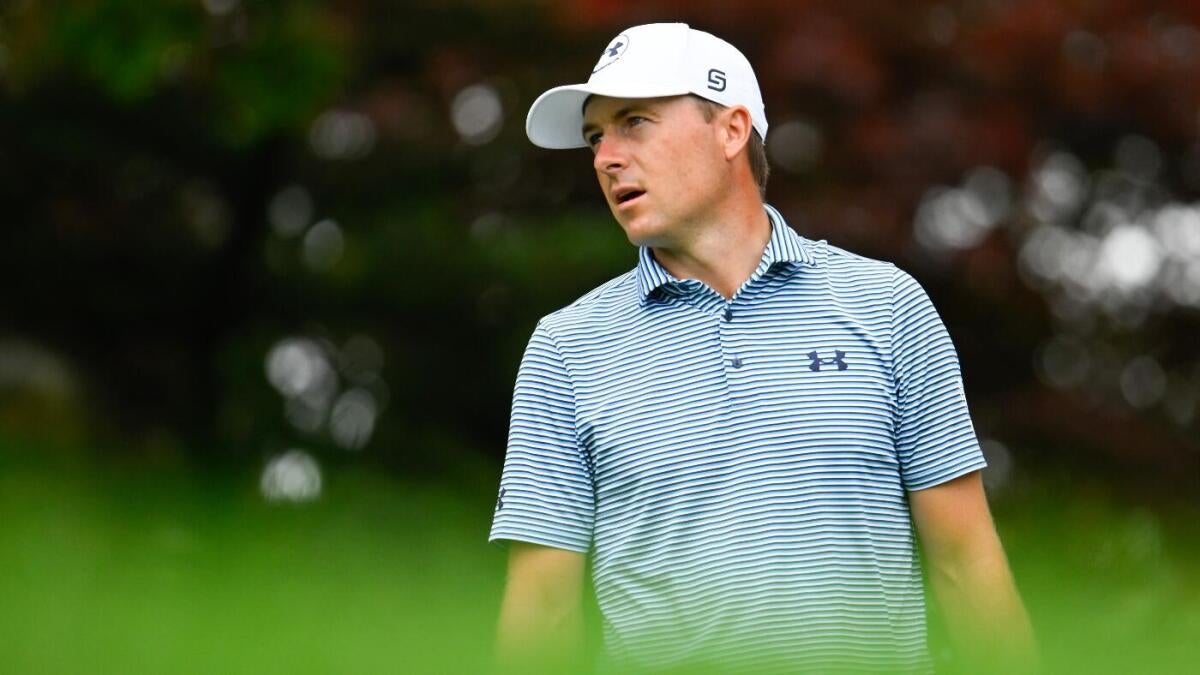A Sudden Halt: Analyzing Jordan Spieth’s Withdrawal from the Travelers Championship
An Unprecedented Moment in a Stellar Career
The golfing community was left in shock during the opening round of the 2025 Travelers Championship. Jordan Spieth, a name synonymous with excellence and consistency in the sport, was forced to withdraw due to a neck and upper back injury. This marked a historic moment: his first withdrawal from a PGA Tour event in an astonishing 297 starts. The incident not only highlighted the unpredictable nature of sports but also raised questions about the physical demands of professional golf and the resilience of its athletes.
The End of an Impressive Streak
Spieth’s career is a testament to his dedication and resilience. With 13 wins, including a victory at the Travelers Championship in 2017, he has consistently ranked among the top players globally. His streak of completing every tournament he entered for nearly a decade is a remarkable achievement, underscoring his commitment to the sport. The abrupt end of this streak at TPC River Highlands was a stark reminder of the unforeseen challenges athletes face. The injury, described as a sudden onset of tightness in his shoulder blade, rapidly worsened, forcing Spieth to concede the round. This incident serves as a poignant reminder of the physical toll that professional golf can take on even the most resilient athletes.
The Nature of the Injury
The injury that sidelined Spieth was initially reported as a neck and upper back issue, but further details revealed a more specific problem: tightness in his shoulder blade. Spieth suggested that the injury might have been triggered by sleeping in an awkward position, highlighting the unpredictable nature of physical ailments. The pain escalated quickly, making it impossible for him to complete his swing without significant discomfort. Golf Channel cameras captured Spieth receiving treatment on the course, a clear indication of the distress he was experiencing. The suddenness of the injury is particularly noteworthy, as Spieth had reported feeling “great” during a gym session prior to the tournament.
Impact on a Promising Season
The withdrawal comes at a crucial juncture in Spieth’s season. He had been enjoying a strong year, with four top-10 finishes already under his belt. The Travelers Championship, a Signature Event, represented a valuable opportunity to further solidify his position among the tour’s elite. While the injury doesn’t necessarily jeopardize his long-term prospects, it undoubtedly disrupts his momentum and raises questions about his preparation for upcoming major championships, particularly The Open. The timing is especially concerning as players begin to fine-tune their games for the challenges of links golf.
A Display of Sportsmanship
Despite the disappointment of being forced to withdraw, Spieth demonstrated commendable sportsmanship. He personally apologized to his playing partner, Luke Clanton, for having to abandon the round. This gesture, while seemingly small, speaks volumes about Spieth’s character and respect for his fellow competitors. It highlights his understanding that golf is not just an individual pursuit but a game built on camaraderie and mutual respect. This act of sportsmanship is a defining characteristic of Spieth’s career and a testament to his professionalism.
The Broader Context: Injuries on Tour
Spieth’s situation is not an isolated incident. The demanding physical nature of professional golf, coupled with a grueling travel schedule, often leads to injuries. Jon Rahm’s recent withdrawal from the US Open due to a foot infection and Patrick Cantlay’s history with back injuries serve as stark reminders of the vulnerabilities faced by even the most accomplished athletes. These instances underscore the importance of preventative care, proper conditioning, and the need for players to prioritize their physical well-being. The golfing world is not immune to the challenges of maintaining peak physical condition, and Spieth’s injury is a poignant reminder of this reality.
The Significance of the First Withdrawal
The fact that this was Spieth’s first withdrawal in 297 starts is not merely a statistical anomaly. It reflects a level of dedication and toughness rarely seen in professional sports. Players withdraw from events for various reasons—illness, personal emergencies, or, as in Spieth’s case, injury. However, the sheer number of consecutive starts completed before this incident speaks to his unwavering commitment to the game and his refusal to give in to discomfort. It’s a testament to his professionalism and a defining characteristic of his career. This streak is a remarkable achievement in the world of professional sports, where injuries and setbacks are common.
Looking Ahead: Recovery and Return
The immediate focus for Spieth will be on recovery and rehabilitation. The severity of the injury and the timeline for his return remain uncertain. He will undoubtedly work closely with his medical team to determine the best course of action, prioritizing a full recovery over a hasty return to competition. The golfing world will be watching closely, hoping for a swift and complete recovery for one of the sport’s most popular and talented players. His absence will be felt on the tour, and his return will be eagerly anticipated. The incident serves as a poignant reminder of the physical demands of professional golf and the fragility of even the most resilient athletes.
Conclusion: A Reminder of Resilience
Jordan Spieth’s withdrawal from the Travelers Championship serves as a powerful reminder of the unpredictable nature of sports and the resilience required to excel in them. His unprecedented streak of 297 consecutive starts is a testament to his dedication and toughness, qualities that have defined his career. As he focuses on recovery, the golfing world will be watching, hoping for his swift return. This incident underscores the importance of prioritizing physical well-being and the need for preventative care in the demanding world of professional golf. Spieth’s journey serves as an inspiration, reminding us that even the most resilient athletes face challenges and that true greatness lies in how they overcome them.

